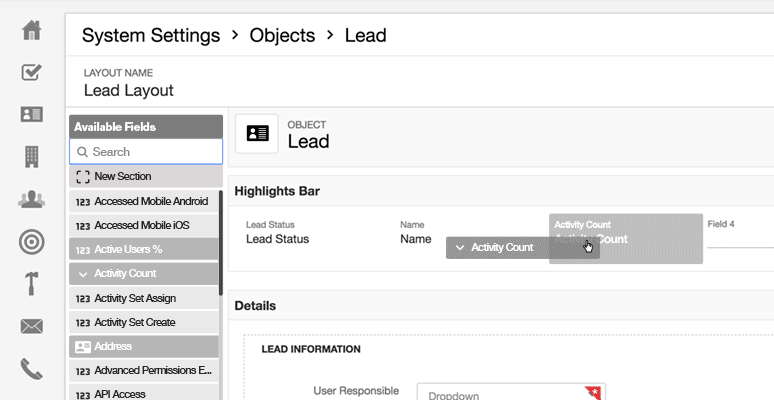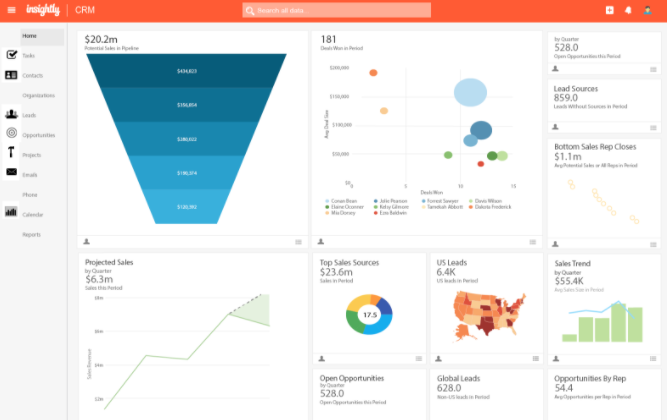This is part 3 of a 5 part blog series.
Part 1 Backup & Security
Part 2 Data Integrity
Part 3 User Adoption
Part 4 Dashboard Reporting
Part 5 Ongoing Support
You just purchased Insightly for your business, you love the layout, all-in-one sales and project features, and you’re ready to introduce the new system to your organization. You’ve customized your workflow, imported your data, and connected your apps. Maybe you’ve even implemented the new page layout and dashboard reporting features too. Everyone has seen the presentation and all nod their head in HUGE approval. Fast forward one week, you login, and your activity reports show practically nothing. Silence.
Thoughts that might come to mind… What did I do wrong? Do they just need more time? Is this the right software for us?
Chances are we didn’t have an effective rollout strategy!
Here are seven tips to help cultivate good habits with your users:
1. Leadership
Before buying your CRM, you should have surveyed your users, defined their needs, and included one or two of them in the buying decision to increase organization-wide buy-in. Everyone needs to have a vested interest in the decision.
If you’re already using Insightly, ask your organization’s leader to say a few words, “Insightly is our new tool for getting business done. If it’s not in Insightly, it didn’t happen.”
2. Training
- Tailor the training to each specific user or department.
- Training is mandatory.
- Don’t just show them how the system works, let them drive and add context to their new daily workflow using “what if” scenarios.
- Ensure the trainer is from the same department and knows the software and the user’s workflow inside and out.
- Once training is complete, provide ongoing support and easy access to new training sessions, cheat sheets, and internal chat for fast support from your trainer(s).
Stay tuned for Part 5 when we go into detail on “Ongoing Support”!
3. User Engagement
Instill in the minds of your users that Insightly is required to get the job done. Here are a couple of ways to help enforce the new rules:
- Eliminate other tools used for doing business. If users are still gravitating back to spreadsheets, explain the benefits of Insightly and drive home that Insightly is the one source of truth for everyone in your organization.
- Integrate Insightly with other applications used to complete their job. For example, the only way for a sales rep to get paid is by closing an opportunity and sending a contract to the client through PandaDoc.
- Don’t overwhelm them with too many options or tasks. Make it easier on your users to focus on the right records, data, and required fields by combining these three features: Custom List Views, Advanced Permissions, and Page Layouts.
For example, a sales user will create Custom List Views to see only profitable opportunities with a high probability of closing. Next, using Advanced Permissions, they’ll only see the opportunities they have ownership over and records their role is allowed to access. Once Advanced Permissions are set, we use Page Layouts to customize the sales role experience even more by showing only the required fields in a logical order for closing the opportunity. Throw in Workflow Automation and now they have less fields to complete, messages to send, and buttons to click!
4. Self-improvement
Give your users reports and dashboards relevant to their specific role showing them how they add value to the organization. After your user displays consistent engagement with Insightly, show them how to build their own reports and dashboards.
Allowing users to regulate themselves is a key tool for management in optimizing overall production.
5. Invest in your users
Find the best Insightly user in each department and direct them to periodically visit other users in the office to give support, tips, and best practices on Insightly. If your team is remote, ask your team leader(s) to include Insightly coaching and user activity reports in their meetings.
6. Gamification
Heat up your team’s competitive spirit by offering prizes for increased user engagement. If you have access to a big flat screen, install the tv in the middle of the office within everyone’s eyesight. Next, share a dashboard report on the screen showing what reps are generating hot leads or closing the biggest deals in Insightly!
7. The Wall of Help
Some people call it, “The Wall of Shame”, I call it, “The Wall of Help”. Create a report showing the most inactive users by the amount of times they log into Insightly and amount of lead, opportunity, or activity records created every week. If you find a user trailing behind in “The Wall of Help” for longer than two consecutive weeks, reach out to them, ask them what’s going on, and help them.
Stay tuned for Part 4 where we explore more best practice tips for Insightly CRM and reporting tools:
Insightly Custom List Views
Insightly Advanced Reports
Insightly Dashboard Reports
Insightly Mobile Dashboard Reports
Time Tracking & User Login Reports
Accessing Insightly Data with 3rd Party Apps
Microsoft Power BI Dashboard Reports
In the meantime, I encourage you to review best practices Part 1 Backup & Security & Part 2 Data Integrity.
About the Author:
Micah Feldkamp is an Insightly Hero and CRM consultant specializing in Insightly software implementations.




























